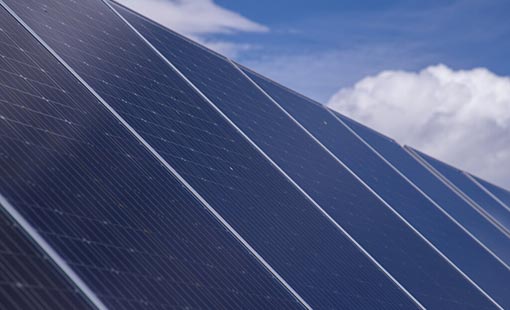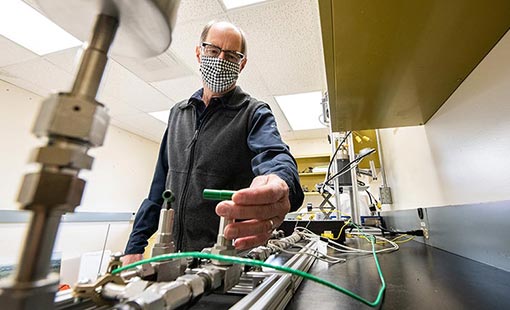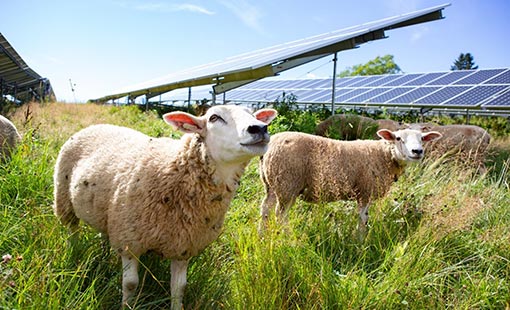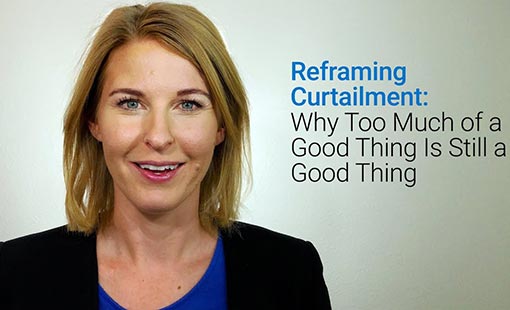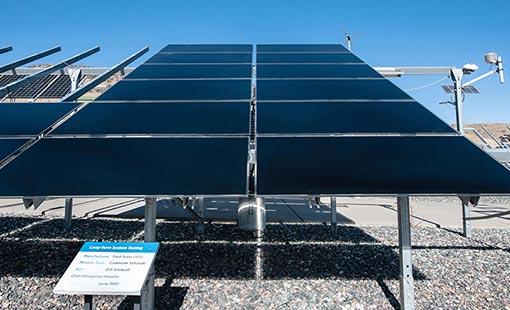Solar Newsletter—August 2022
The Solar Newsletter is an electronic newsletter that provides information about NREL's research and development of solar technologies.
Subscribe to the Solar Newsletter or see the archives.
NREL Analysis Highlights Strategies Beyond Recycling To Bolster Circular Economy for Solar and Battery Technologies
In a new comprehensive analysis, NREL researchers discovered untapped pathways to build an effective circular economy for solar photovoltaic (PV) and battery technologies. The findings highlight key recycling insights, gaps, and opportunities for research and implementation, including strategies currently being underutilized. Demand for PV panels and lithium-ion batteries is expected to increase as the United States shifts away from fossil fuels and deploys more clean energy.
An Inventor Retires as His Solar Technology Takes Flight
A deep respect for the environment led Greg Glatzmaier through four decades of achievements at NREL. His research legacy amassed innovations in concentrating solar power, two R&D 100 awards, and four patents. Instead of basking in retirement, the scientist will travel the world helping solar power plant operators implement a more efficient technology he invented. The idea could someday be used in every concentrating solar power plant in the world.
Growing Plants, Power, and Partnerships Through Agrivoltaics
Agrivoltaics is the concept of mixing solar array installations with agricultural land use, and it’s a growing win-win solution for advancing the benefits of renewable energy. For solar developers and local farmers, the Innovative Solar Practices Integrated with Rural Economies and Ecosystems (InSPIRE) project—led by NREL and funded by the U.S. Department of Energy’s Solar Energy Technologies Office—shows a pathway to join forces and profit. The solar installations can be modified to provide extra space for grazing cattle or sheep, growing crops, cultivating pollinator-friendly native plants, or providing ecosystem services and restoring degraded soil. When all sides better understand the possibilities of agrivoltaics, low-impact solar development becomes easier and more common.
Reframing Curtailment: Why Too Much of a Good Thing Is Still a Good Thing
Curtailment—or what happens when more renewable energy is available than required by customers—gained a negative connotation as wasting clean, free electricity. In a new video, NREL uses the power of analogy to call for a shift in mindset. Having excess renewable energy capacity creates a more reliable and flexible grid. Plant operators can use curtailment as a strategy to respond to changing system needs and maintain resilience—adding value to wind and solar plants beyond their ability to generate electricity.
Cadmium Telluride Accelerator Consortium Aims To Reduce Costs, Speed Deployment of Low-Carbon Thin-Film Solar Technologies
The U.S. Department of Energy announced a new three-year, $20 million effort to accelerate the development and efficiency of cadmium telluride (CdTe) technologies. NREL will oversee the CdTe Accelerator Consortium, acting as a resource, support, and technical analysis center to lower the cost and increase the efficiency of the thin-film solar cells. After silicon, CdTe is the second most common photovoltaic technology in the world. It is manufactured at similar cost as silicon yet provides the lowest carbon and water footprints and the fastest energy payback times of panels available today. Investing in solar technology is key to cutting the cost of solar energy by 60% within the next 10 years, improving performance, and paving the way for a clean energy future.
Research Highlights
An Energy Transition Made Easy: NREL's Educational Resources for Grid Interconnection, Video (2022)
Enabling Floating Solar Photovoltaic (FPV) Deployment: Exploring the Operational Benefits of Floating Solar Hydropower Hybrids, USAID-NREL Report (2022)
Results From an International Interlaboratory Study on Light- and Elevated Temperature-Induced Degradation in Solar Modules, Progress in Photovoltaics (2022)
Photovoltaic Fleet Degradation Insights, Progress in Photovoltaics (2022)
Light- and Elevated-Temperature-Induced Degradation-Affected Silicon Cells From a Utility-Scale Photovoltaic System Characterized by Deep-Level Transient Spectroscopy, IEEE Journal of Photovoltaics (2022)
Semiconductor-Dielectric-Metal Solar Absorbers With High Spectral Selectivity, Nature (2022)
Upcoming Events
Aug. 23 – Webinar: NREL Research Shows Key Factors Driving the Value of Solar Plus Storage to Customers and the Grid, Solar Energy Industries Association
Aug. 25 – Community Solar Resources for Multifamily Affordable Housing Providers Webinar, NREL
Aug. 25 – Solar District Cup Class of 2022–2023 Informational Webinar, U.S. Department of Energy
Sept. 12 – Webinar: A Retrospective of DuraMAT's First 5 Years, Durable Module Materials Consortium
Sept. 28 – How Do We Reduce the Carbon Impact of a Green Technology?, NREL
Feb. 28–March 2 – PV Reliability Workshop, NREL and DuraMAT
Staff Profile – Grant Buster

Data Scientist
Data Analytics, Tools, and Applications
Strategic Energy Analysis Center
Shortly after the United States launched the Geostationary Operational Environmental Satellite 16 (GOES-16), Grant Buster launched the biggest project of his career—rewriting the software for NREL's National Solar Radiation Database (NSRDB) to include higher-resolution data from the satellite. The NSRDB is a publicly available collection of meteorological and solar radiation data that show the amount of available solar energy at any past time and location. Buster rewrote the NSRDB software to not only include the new GOES data but also be more flexible and efficient. Because of Buster's work, the NSRDB now provides solar irradiance data at a nominal 2-kilometer, 5-minute resolution. It also now includes solar data for Africa, Europe, the Middle East, and Asia. The NSRDB has had nearly 150,000 users in 2022 so far, with 2.5 million download requests in the last quarter alone.
“Working on solar resource data has been a fantastic way to help enable high-quality renewables research around the world,” Buster said. “Besides, solar data is pretty rad!”
Share

